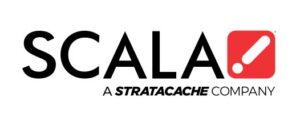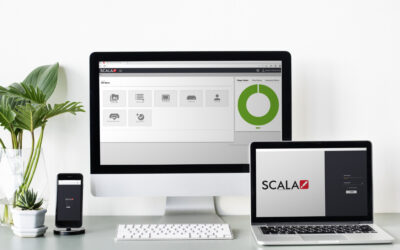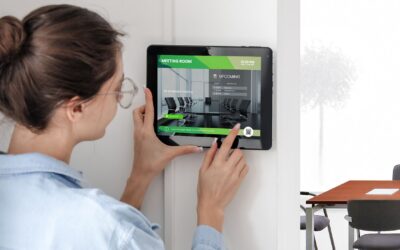QSR landscape in South-east Asia positions for growth
The Quick Service Restaurants (QSR) industry is one of the fastest growing industries in South-east Asia. In particular, the SEA6 countries – Indonesia, Malaysia, Singapore, Thailand, Vietnam and the Philippines, are important consumer markets and represent a large market for global chains like McDonalds, Subway, Pizza Hut, Burger King, as well as domestic brands such as Jollibee and Lotteria.
These developed and developing countries are composed of a large and growing aspirational middle class that drives consumption growth.
SEA 6 Key Growth Factors
The middle class drives growth for a few main reasons. Namely:
• Rising incomes
• Young populations
• Urbanization
• Influence of Western lifestyles
These influences are projected to generate consistent growth for QSRs. The Asia Pacific fast food market is estimated to reach $480.9 billion by 2027 at a CAGR of 4.7% from $365 billion in 2021. Philippines and Vietnam are projected to register the highest growth in food service at 11.2% and 7.8% respectively, followed by Indonesia at 7%.

Impact of COVID-19s
The unforeseen COVID-19 pandemic has led to a decline in QSR sales across South-east Asia, driven mainly by safety concerns and a decrease in household incomes. In addition, easy access to online ordering added to the reduced numbers. In Singapore, dine out meals dropped from 27% pre lockdown to 14% post lockdown. In Thailand, it decreased from 30% to 21%.
The pandemic turbocharged a shift to the digital economy. QSRs in South-east Asia swiftly embraced the new normal and accelerated digitalisation to meet the evolving needs of consumers. In fact, 40% of the QSR operators added technology solutions to their business; they also perfected takeaways and delivery services to keep revenues soaring.
QSRs have seen some relief in their sales 18 months into the pandemic. Malaysia and Thailand have seen a bounce back of 85% of pre-Covid revenue. With the situation slowly returning to normalcy, QSRs are taking every measure to give customers a frictionless ordering and dining experience. They are leveraging digital signage to achieve this aim.
In Singapore, Burger King has opened three more stores amidst the pandemic. With customers coming back to the restaurants, the chain is inculcating contactless procedures and digital restaurant menus to increase footfall.
Digital Menu Boards Put the “Quick” in QSRs
Integrating digital restaurant menus has brought unprecedented opportunities for QSR owners. Apart from capturing customer attention, they deliver the “quick” in QSR.
Digital menu boards can bring restaurant menus to life with videos and animations and is the perfect solution to improve the ordering experience.
Here are some factors, which make digital signage for QSRs a necessity today.
Enhance customer experience
Digital restaurant menus bring restaurant menus to life with videos and animations and is the perfect solution to improve the ordering experience.
Nutritional information and calorie count for each menu item can be displayed, providing value-added information to diners. Digital menu boards featuring mouth-watering visuals and strategically placed outside the restaurant help to capture more attention and increase footfall than traditional menus.
In fact, reports have shown that digital signage contributes to 3%-5% average sales lift. Digital menu boards can also feature infotainment to further elevate the customer experience.
Smart Digital Promotion
Digital restaurant menus present an excellent upsell opportunity as they can be used to display high margin food items to boost revenue.
Based on orders entered in a POS system, the digital screens can display complimentary items. It is an excellent tool for restaurants that offer combos and menu add-ons like sides, drinks, and desserts.
A recent article quoted that 29.5% of customers find digital menus influential for purchase of the products.
Queue Management
Self-service kiosks help to facilitate ordering and minimise the need for staff assistance. The built-in touchless payment options eliminate long queues and reduces customer’s perceived wait time while improving customer experience. A recent report revealed that 71% of customers prefer kiosks to traditional payment methods.
Smart Outdoor Menu Boards
Entice customers to enter the restaurant through an appealing outdoor digital menu board. Smart digital boards that feature different menus at different times of the day can be capitalised to induce demand in customers passing by. With 52% of customers recalling content on digital displays, eye-catching digital menu boards are the way to go.
Improve collection process
Large digital displays situated near the collection point can help to improve the collection process by tracking the orders that are in the queue and alerting customers when their order is ready.
Customer Safety
With the ongoing pandemic, digital restaurant menus embedded with QR codes have replaced the use of traditional paper menus. Customers can easily view the touchless menu on their phone devices by scanning the QR code.
Explore Digital Menu Board Solutions
QSR digital signage has brought a complete makeover to the QSR industry. The seamless ordering process and unparalleled customer experience that it brings help QSRs to increase footfall and drive revenue.
Global QSR brands have leveraged Scala’s digital signage solutions to boost their business. Find out more about Scala here.
About the Author
Esther Chew is the Sr. Manager – Corp Comm & Marketing at STRATACACHE Asia-Pacific and is responsible for developing and implementing the internal and external communications strategy and programmes across Asia-Pacific. She drives the company’s corporate image and brand messaging through integrated and strategic communications leveraging various platforms such as executive communication, client communication, digital marketing, media relations and B2B events.





